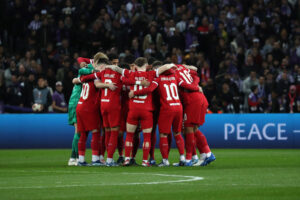When Arsenal appointed Mikel Arteta in December last year, the Spaniard was under no illusions as to the size of the task ahead of him.
We need to be competing for the top trophies in the game,” Arteta said. “We all know there is a lot of work to be done to achieve that but I am confident we’ll do it. I’m realistic enough to know it won’t happen overnight, but the current squad has plenty of talent and there is a great pipeline of young players coming through from the academy.”
How Arsenal Have Improved Under Mikel Arteta
It only took one game for Arteta to notice the problems in Arsenal’s set-up. The alarming way in which the Gunners’ defenders backed off Manchester City’s Kevin De Bruyne and co. will have surely made Arteta wonder, from the City bench alongside Pep Guardiola, what had happened to his former club since he left in 2016.
It is no wonder that bowed heads and shrugged shoulders were a common sight among those connected with Arsenal that day – they were as close to the relegation zone as they were to the Champions League places and had conceded more goals after 17 games than in any previous Premier League season.
It says a lot about the Arsenal board’s confidence in Arteta that they were willing to hand over such an enormous task to a man who has never managed before, despite all that he undoubtedly learned at Manchester City. And the start that the Gunners made under the Spaniard – three wins in their first nine games in all competitions – emphasised the risk that this appointment would bring.
Slowly but surely, however, things are looking up. After that uncertain start, Arsenal have won their last three Premier League games, reached the quarter-finals of the FA Cup and, with Manchester City banned from the European football for the next two seasons, back in the running for Champions League football next season. They sit eight points off fourth-placed Chelsea and five off Manchester United in fifth, with a game in hand on both.
The season has been on halt due to the Coronavirus pandemic and it remains to be seen if Arsenal will get a chance to climb up the table even further, with further decisions from the Premier League about the fate of the 2019/20 season due in the coming months.
Yet, although it is still early days, it is evident that Arsenal have made improvements under Arteta. Even during the inconsistent first nine games, the Gunners seemed more resolute in defence and more structured in midfield – something that has held the club back for some time, even with the undisputed attacking talent at their disposal.
And were it not for individual errors, such as Bernd Leno’s misjudged flap at a cross against Chelsea, and deflected equalisers from Sheffield United and Crystal Palace, Arteta may have more to show for his efforts. Regardless of the results, however, the performances gave Arsenal fans plenty of room for encouragement.
So what has Arteta changed and how have Arsenal improved under his management?
One area that has shown positive strides is in defence. Under Unai Emery, Arsenal were set up in a 4-2-3-1 formation, with two holding midfielders deployed to shield the defence. This system failed because teams could move Arsenal players so they were left isolated, which consequently left their defenders in one vs one situations more often than not.
Interestingly, Arteta has stuck with the same formation used by Emery but has set up Arsenal in a different way when it comes to their work off the ball. The 4-2-3-1 formation changes into a 4-4-2 when defending, with the two wide men, which have recently been Nicholas Pepe and Pierre-Emerick Aubameyang, dropping back, while Mesut Ozil moves up into a more attacking role. The change has meant that Arsenal have players that can cover more space and avoid the team becoming more isolated.
Arteta has also emphasised a different style of press since taking over. Under Emery, Arsenal were committed to pressing up the field, with the defence holding a high line, this left them exposed to any movement in behind. Under Arteta, Arsenal are still pressing but with the aim of forcing their opponents wide and therefore cutting off their options. This is led by the likes of Ozil, Pepe and Aubameyang, while the midfield aims to go tighter to the players they are marking. This has led to Arsenal winning the ball back more often.
The impact this has had on Arsenal’s defensive record is there to see. Before Arteta was appointed, Arsenal were, on average, conceding 1.33 goals per game. It is now 0.92 since he took over as manager. Also, the Gunners have already doubled the number of clean sheets in this period.
In attack, Arsenal move away from their 4-4-2 shape and into a 4-2-3-1, with an emphasis on having five players in their attacks. Bukayo Saka, who has impressed as a makeshift left-back this season, is encouraged to push higher up the field and join attacks, which allows Arsenal’s attackers to adopt more central positions. Arteta has placed an emphasis on getting as many players in the box as possible due to the fact that it forces teams back as they have to mark the players in these advanced positions.
The build-up to Arsenal’s attacks under Arteta has revolved around the midfield pairing. While Saka plays an important role in dragging opposition defenders away from the Gunners’ main attacking threats, the central midfield pivot is influential in dictating play for Arteta’s side.
The combination most frequently used by Arteta has been Granit Xhaka and Dani Ceballos. Xhaka’s tackling ability (his 37 tackles is the most by an Arsenal player this season) complements Ceballos’s passing style well and the pair use the extra width created by the likes of Saka, Pepe and Aubameyang to shift the ball quickly and advance Arsenal into more dangerous areas.
In addition, instead of trying to play combinations in certain areas of the field, Arsenal look to move the ball out wide and quickly back inside and vice versa so that they can stretch their opponents, giving the forwards more room to operate in. Arteta aims to use Ozil to his strengths in this system, giving him the freedom to find space between the lines which offers the opportunity for a pass that splits opposition defences.
Such changes have had a drastic impact on Arsenal’s form in front of goal. Before Arteta’s appointment, they were scoring just 1.26 goals per game, on average. Now, that number has risen to 1.78 goals per game.
Opportunities for younger players and an improved squad environment are other areas in which Arteta is said to be impressing. There is a long road ahead but the initial signs are positive. The Spaniard is making Arsenal harder to play against and more efficient in attack.
Question marks remain around the sustainability of these methods but, at this stage, Arsenal fans care about improvement and Arteta is certainly delivering that, both in performances and results.
Main Photo:






